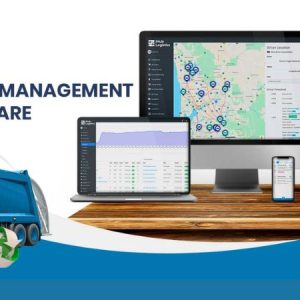In this article, learn about inventory management and its related disciplines from inventory experts. At the end, you will find an FAQ list on inventory.
What Is Inventory Management?
Inventory management helps companies identify which and how much stock to order at what time. It tracks inventory from purchase to the sale of goods. The practice identifies and responds to trends to ensure there’s always enough stock to fulfill customer orders and proper warning of a shortage.
Once sold, inventory becomes revenue. Before it sells, inventory (although reported as an asset on the balance sheet) ties up cash. Therefore, too much stock costs money and reduces cash flow.
One measurement of good inventory management is inventory turnover. An accounting measurement, inventory turnover reflects how often stock is sold in a period. A business does not want more stock than sales. Poor inventory turnover can lead to deadstock, or unsold stock.
Why Is Inventory Management Important?
Inventory management is vital to a company’s health because it helps make sure there is rarely too much or too little stock on hand, limiting the risk of stockouts and inaccurate records.
Public companies must track inventory as a requirement for compliance with Securities and Exchange Commission (SEC) rules and the Sarbanes-Oxley (SOX) Act. Companies must document their management processes to prove compliance.
Benefits of Inventory Management
The two main benefits of inventory management are that it ensures you’re able to fulfill incoming or open orders and raises profits. Inventory management also:
-
Saves Money:Understanding stock trends means you see how much of and where you have something in stock so you’re better able to use the stock you have. This also allows you to keep less stock at each location (store, warehouse), as you’re able to pull from anywhere to fulfill orders — all of this decreases costs tied up in inventory and decreases the amount of stock that goes unsold before it’s obsolete.
-
Improves Cash Flow:With proper inventory management, you spend money on inventory that sells, so cash is always moving through the business.
-
Satisfies Customers: One element of developing loyal customers is ensuring they receive the items they want without waiting.
Inventory Management Challenges
The primary challenges of inventory management are having too much inventory and not being able to sell it, not having enough inventory to fulfill orders, and not understanding what items you have in inventory and where they’re located. Other obstacles include:
-
Getting Accurate Stock Details: If you don’t have accurate stock details,there’s no way to know when to refill stock or which stock moves well.
-
Poor Processes: Outdated or manual processes can make work error-prone and slow down operations.
-
Changing Customer Demand: Customer tastes and needs change constantly. If your system can’t track trends, how will you know when their preferences change and why?
-
Using Warehouse Space Well: Staff wastes time if like products are hard to locate. Mastering inventory management can help eliminate this challenge.
Learn more about the challenges and benefits of inventory management.
What Is Inventory?
Inventory is the raw materials, components and finished goods a company sells or uses in production. Accounting considers inventory an asset. Accountants use the information about stock levels to record the correct valuations on the balance sheet.
Learn more about inventory in the article “What Is Inventory?”.
Inventory vs. Stock
Inventory is often called stock in retail businesses: Managers frequently use the term “stock on hand” to refer to products like apparel and housewares. Across industries, “inventory” more broadly refers to stored sales goods and raw materials and parts used in production.
Some people also say that the word “stock” is used more commonly in the U.K. to refer to inventory. While there is a difference between the two, the terms inventory and stock are often interchangeable.
What Are the Different Types of Inventory?
There are 12 different types of inventory: raw materials, work-in-progress (WIP), finished goods, decoupling inventory, safety stock, packing materials, cycle inventory, service inventory, transit, theoretical, excess and maintenance, repair and operations (MRO). Some people do not recognize MRO as a type of inventory.
Learn more about the 12 different types of inventory.
Video: What Is Inventory Management?
Inventory Management Process
If you produce on demand, the inventory management process starts when a company receives a customer order and continues until the order ships. Otherwise, the process begins when you forecast your demand and then place POs for the required raw materials or components. Other parts of the process include analyzing sales trends and organizing the storage of products in warehouses.
How Inventory Management Works
The goal of inventory management is to understand stock levels and stock’s location in warehouses. Inventory management software tracks the flow of products from supplier through the production process to the customer. In the warehouse, inventory management tracks stock receipt, picking, packing and shipping.
Inventory Management Techniques and Terms
Some inventory management techniques use formulas and analysis to plan stock. Others rely on procedures. All methods aim to improve accuracy. The techniques a company uses depend on its needs and stock.
Find out which technique works best for your business by reading the guide to inventory management techniques. Here’s a summary of them:
-
ABC Analysis: This method works by identifying the most and least popular types of stock.
-
Batch Tracking: This method groups similar items to track expiration dates and trace defective items.
-
Bulk Shipments: This method considers unpacked materials that suppliers load directly into ships or trucks. It involves buying, storing and shipping inventory in bulk.
-
Consignment: When practicing consignment inventory management, your business won’t pay its supplier until a given product is sold. That supplier also retains ownership of the inventory until your company sells it.
-
Cross-Docking: Using this method, you’ll unload items directly from a supplier truck to the delivery truck. Warehousing is essentially eliminated.
-
Demand Forecasting:This form of predictive analytics helps predict customer demand.
-
Dropshipping: In the practice of dropshipping, the supplier ships items directly from its warehouse to the customer.
-
Economic Order Quantity (EOQ): This formula shows exactly how much inventory a company should order to reduce holding and other costs.
-
FIFO and LIFO: First in, first out (FIFO) means you move the oldest stock first. Last in, first out (LIFO) considers that prices always rise, so the most recently-purchased inventory is the most expensive and thus sold first.
-
Just-In-Time Inventory (JIT): Companies use this method in an effort to maintain the lowest stock levels possible before a refill.
-
Lean Manufacturing: This methodology focuses on removing waste or any item that does not provide value to the customer from the manufacturing system.
-
Materials Requirements Planning (MRP): This system handles planning, scheduling and inventory control for manufacturing.
-
Minimum Order Quantity:A company that relies on minimum order quantity will order minimum amounts of inventory from wholesalers in each order to keep costs low.
-
Reorder Point Formula:Businesses use this formula to find the minimum amount of stock they should have before reordering, then manage their inventory accordingly.
-
Perpetual Inventory Management:This technique entails recording stock sales and usage in real-time. Read “The Definitive Guide to Perpetual Inventory” to learn more about this practice.
-
Safety Stock:An inventory management ethos that prioritizes safety stock will ensure there’s always extra stock set aside in case the company can’t replenish those items.
-
Six Sigma:This is a data-based method for removing waste from businesses as it relates to inventory.
-
Lean Six Sigma:This method combines lean management and Six Sigma practices to remove waste and raise efficiency.
Inventory vs. Cycle Counting
“Taking inventory” is the process of physically counting all stock, once a year in most cases. Cycle counting is the practice of counting a selected set of stock more often. Cycle counting serves as an important means of checks and balances to ensure the amount of inventory represented in the inventory management system is what you have on the shelf.
A cycle counting best practice is to count specific SKUs regularly and integrate it into the daily tasks of warehouse staff. Companies may determine different standards for different types of inventory, such as performing a cycle count of top-moving SKUs or higher-value items. Learn more about the benefits of cycle counting.
Demand Planning and Inventory Management
Demand planning is an important part of successful inventory management. It is the process of determining how much of each item you anticipate selling, and when. Once demand is determined, inventory management follows the flow of goods from the supplier through production and ultimately fulfilling customer orders.
Find out more about how demand planning and inventory management work together in the “Essential Guide to Inventory Planning.”
Inventory Management Formulas
Understanding inventory management formulas is crucial to optimizing stock levels. Multiple inventory and accounting professionals have vetted formulas to make inventory calculations easier.
Inventory Management KPIs
Effective inventory management plays an important role throughout the supply chain. There are many key performance indicators for measuring inventory management success throughout the different organizations in the business. Understand which calculations return the most insight into your business processes is important. To learn more, see inventory management KPIs.
How Is Inventory Management Different From Other Processes?
People sometimes confuse inventory management with related practices. Inventory management controls all stock within a company. Supply chain management manages the process from supplier to delivering the product to the customer. Warehouse management is a part of inventory control and focuses on stock in a specific location.
Inventory Management vs. Inventory Control
inventory control is a part of the overall inventory management process. Inventory control manages the movement of items within the warehouse.
Learn more about how these practices work together in our article on inventory control vs. inventory management.
Inventory Management vs. Inventory Optimization
Inventory optimization is the process of using inventory in the most efficient way, and as a result minimizing the dollars spent on stock and storing those items.
You can also think about inventory optimization as seeing inventory across all locations and selling channels, being able to use any of it to fulfill customer orders—in doing so, you can hold less stock overall.
Inventory Management vs. Order Management
Inventory management is responsible for ordering and tracking stock as it arrives at the warehouse. Order management is the process of receiving and tracking customer orders. Software often combines both tasks.
Inventory management plays an important role in order management. As orders are received, inventory can be allocated to specific orders, and then the status can be changed in the inventory record to essentially put it “on hold” for that order. Furthermore, when the order management system and inventory system are integrated, the inventory system can recommend which location should fulfill the order, based on where all the items in the order are available—this eliminates multiple shipments for a single order.
Inventory Management vs. Supply Chain Management
Supply chain management is a process of managing supply relationships outside a company and the flow of stock into and through a company. Inventory management may focus on trends and orders for the company or a part of the company.
Inventory management is essential for a properly running supply chain. Inventory management follows the flow of goods to, through and out of the warehouse. The supply chain includes demand planning, procurement, production, quality, fulfillment, warehousing and customer service—all of which require inventory visibility.
Inventory Management vs. Warehouse Management
Warehouse management complements inventory management. Warehouse management organizes stock in a warehouse. Inventory management manages stock and trends for many warehouses or an entire company.
The key to streamlining your warehouse operations is a thoughtfully laid out and meticulously organized facility. When each product has a specific place in the warehouse, it prevents staff from moving about inefficiently and maximizes labor efficiency. But these processes are only as good as the inventory records that drive them.
Learn more about how warehouse management and inventory management work together.
Inventory Management vs. Logistics
Logistics is the practice of controlling processes in a warehouse and in the replenishment and delivery systems. Inventory management maintains stock levels and manages stock location.
Inventory management is a crucial part of how companies manipulate their logistics. The relationship between inventory management and logistics is interdependent. Logistics need inventory management to perform their activities. Good logistics systems improve warehouse and operational activities.
Find out more about this topic by reading “The Benefits of Integrating Your Inventory Software With Your Accounting and Back-Office Processes.”
Inventory Management vs. ERP
An enterprise resource planning (ERP) system is software that manages business activities such as accounting, purchasing, compliance and supply chain operations. By contrast, inventory management is a part of a modern ERP system, providing insight into stock levels, inventory en route and the status of current inventory—this makes it visible across the organization in real time.
Inventory management helps to properly plan a company’s replenishment orders. ERP systems give companies accurate inventory data, so they have the most current information for their inventory management plan. ERP systems optimize the data so inventory management is successful.
Retail Inventory Management
Retail inventory is the stocking of products that you sell to consumers. Use the system to set profitable prices and ensure you have the right amount of stock to meet demand.
Learn more about retail inventory management.
Manufacturing Inventory Management
Manufacturing inventory management is the practice of keeping enough stock on hand so production lines can fulfill orders. The process helps managers see stock levels at a glance and tracks raw materials, parts, work-in-progress and finished goods.
Find out more about manufacturing inventory management.
What Is Multi-Location Inventory Management?
Multi-location inventory management is the process of managing stock across multiple locations, warehouses, and retail stores or across multiple selling channels. With multi-location management, you can watch stock levels in all locations and optimize your inventory to fulfill orders.
What Is an Inventory Management System?
An inventory management system combines varying software packages to track stock levels and stock movements. The solution can integrate with multichannel sales systems or shipping systems.
An inventory management system optimizes inventory levels and ensures product availability across multiple channels. It provides a single, real-time view of items, inventory and orders across all locations and selling channels. This enables businesses to carry less inventory on hand and frees up cash to be used in other parts of the business. An inventory management system helps keep inventory costs low while delivering on customer expectations.
Learn about all inventory management system features and how to pick a solution that’s right for your company.
How to Choose an Inventory Management System?
Choosing an inventory management system is a matter of identifying the features your business needs. Do you need to track stock movements and location within a warehouse, or plan inventory and track trends, or both?
Read “Choosing the Right Inventory Management System” for answers to your research questions. When evaluating a system, remember to look for three key features: real-time demand planning functionality, data analysis tools and near- and real-time data reporting. Learn about each by reading “Three Must-Haves for Your Inventory Management Software Shopping List.”
Inventory Management FAQs
There are many questions in a broad and complicated topic like inventory management. Here are answers to a few:
What Are the Objectives of Inventory Management?
One objective of inventory management is to keep enough stock to satisfy customers. Another is to invest as little as possible in stock while still earning the most profit.
Why Inventory Management Is Important in the Supply Chain
Inventory management is vital in the supply chain because a company must balance customer demand with storage space and cash limitations. Inventory management provides visibility into the supply chain (procurement, production, fulfillment, etc.) so managers can coordinate lead times for deliveries with production timetables.
How Can Inventory Management Be Improved?
Keeping accurate accounting records and taking regular physical stock counts can improve your inventory management efforts. A system that provides your organization with real-time visibility into inventory can help stakeholders make critical business decisions. You should also be aware of a stock’s condition, especially if you’re dealing with perishables.
How Inventory Management Affects the Working Capital
Real goods in warehouses tie up working capital until they sell. Making the supply chain more efficient keeps you from holding too much stock. Improving inventory management processes helps you prevent storing, picking and shipping errors that reduce sales.
What Are Inventory Management Policies?
Inventory management policies are plans for how to use inventory to make customers happy and reduce costs. Policies outline such things as the stock management method the company uses.
What Are the Types of Inventory Management Systems?
There are several types of inventory management systems that businesses use depending on how they operate. Three examples are manual inventory, periodic inventory and perpetual inventory. Manual methods are the least sophisticated and least accurate, and perpetual systems are the most sophisticated and most accurate.
-
Manual Inventory System: This involves physically counting items and recording them on paper or in a spreadsheet. Small businesses may use manual systems.
-
Periodic Inventory System: Periodic inventory systems include manual and periodic counts. Periodic counts record item details as items move in and out of stock. Barcodes simplify stocktaking. A database contains the records of stock levels and locations.
-
Perpetual Inventory System: Perpetual inventory systems provide real-time stock data, as they rely on active radio frequency identification (RFID) tags that are always on and sending updates on item movements. Passive RFID tags, meanwhile, use a scanner to send stock information to the database.
What Is Service Level in Inventory Management?
A service level for inventory management is how much a company believes it can successfully store a particular stock.In other words, it’s the probability a company will avoid stockouts and support sales.
How Does ERP Help in Inventory Management?
Enterprise resource planning (ERP) is helpful for inventory management because it tracks and provides insights into supply chain operation, accounting and purchasing, consolidating the information and making it visible in one place.
What Is Poor Inventory Management?
Poor inventory management is an imbalance between keeping too much and too little stock. The definition of a perfect balance can change as demand changes: Sales change when trends or seasons change. Poor stock management increases costs and thereby reduces profits.
Bring the Benefits of Inventory Management to Your Business With NetSuite
Decision-makers know they need an inventory management system that can grow with them. With automated replenishment and lot tracing and tracking in multiple locations, NetSuite provides cloud-based inventory management solutions that are the perfect fit for businesses of any size. NetSuite offers a suite of native inventory management and control features, including multiple location planning, warehouse and fulfillment management, automated stock replenishment, lot and serial tracking and cycle counting. Learn more about how you can use NetSuite to manage inventory automatically, reduce handling costs and increase cash flow.




